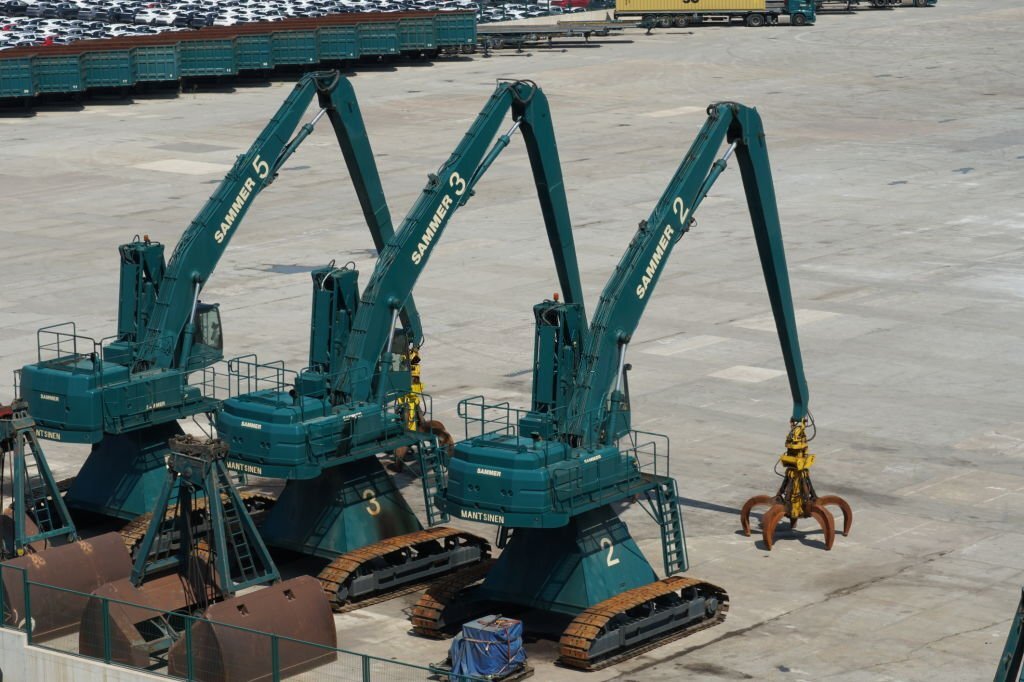
Material handling equipment plays a vital role in improving workplace ergonomics in industries that involve lifting, moving, and transporting materials. By focusing on ergonomic design, automation, lifting aids, and safety features, material handling equipment enhances employee well-being, reduces the risk of injuries, and boosts productivity. This article explores the impact of material handling equipment on workplace ergonomics, highlighting the benefits of ergonomic design and advanced features. Understanding these impacts can help industries prioritize ergonomic considerations and create safer, healthier, and more efficient work environments.
Ergonomic Design :
Material handling equipment with ergonomic design features has a significant impact on workplace ergonomics. These design considerations aim to reduce physical strain on operators and minimize the risk of musculoskeletal disorders (MSDs).
Ergonomically designed equipment includes features such as adjustable controls, operator-friendly interfaces, and comfortable seating. These features promote proper body posture and reduce physical exertion during material handling tasks. Equipment with adjustable height settings allows operators to maintain neutral body positions and reduce the risk of back, shoulder, and arm injuries.
Furthermore, ergonomic design principles consider factors such as reach zones, load placement, and visibility. Equipment with well-positioned controls, clear sightlines, and easily accessible storage compartments reduces the need for awkward postures, repetitive motions, and excessive reaching.
Automation :
Automation in material handling equipment has a profound impact on workplace ergonomics. By automating manual tasks, employees are relieved from physically demanding or repetitive activities, reducing the risk of injuries and improving overall well-being.
Automated systems, such as conveyor belts, robotic arms, and automated guided vehicles (AGVs), can handle heavy loads and repetitive tasks without operator intervention. This eliminates the need for excessive lifting, pushing, or pulling by employees, reducing the risk of musculoskeletal injuries.
Automation also reduces the likelihood of human errors that can lead to accidents or product damage. Employees can focus on supervising and managing the automated systems, ensuring smooth operations and maintaining overall safety.
Lifting Aids :
Material handling equipment equipped with lifting aids significantly improves workplace ergonomics. These aids assist employees in safely lifting, moving, and positioning heavy or bulky materials, reducing the physical strain and risk of injuries.
Examples of lifting aids include hydraulic lifts, pallet jacks, and lift tables. These devices provide mechanical assistance to employees during lifting tasks, minimizing the need for manual effort. By reducing the force required to lift or lower loads, lifting aids alleviate stress on the back, shoulders, and arms, reducing the risk of strains and sprains.
In addition, lifting aids with features such as adjustable height or tilt settings allow employees to position materials at comfortable working heights, promoting proper body mechanics and reducing the risk of injuries caused by awkward postures.
Safety Features :
Material handling equipment with built-in safety features significantly contributes to workplace ergonomics. These features aim to prevent accidents, minimize the risk of injuries, and create a safer work environment.
Safety features may include emergency stop buttons, safety interlocks, and presence detection sensors. These mechanisms ensure that equipment stops or operates safely when necessary, protecting operators and preventing potential hazards.
Furthermore, equipment with anti-vibration features, noise reduction measures, and ergonomic grips help minimize the physical strain on employees and reduce the risk of long-term health issues. Safety measures such as load stability systems, weight sensors, and visual indicators promote safe load handling and prevent overexertion or imbalanced loads.
By incorporating safety features into material handling equipment, businesses demonstrate their commitment to employee well-being, reducing the risk of accidents and injuries, and promoting a positive work environment.
Conclusion :
Material handling equipment significantly impacts workplace ergonomics by focusing on ergonomic design, automation, lifting aids, and safety features. Ergonomically designed equipment promotes proper body posture, reduces physical strain, and minimizes the risk of musculoskeletal disorders. Automation eliminates physically demanding or repetitive tasks, reducing the risk of injuries and improving overall employee well-being. Lifting aids assist employees in safely handling heavy loads, reducing the risk of strains and sprains. Safety features ensure a safe work environment, preventing accidents and minimizing the potential for injuries.
By prioritizing workplace ergonomics through material handling equipment, businesses can create safer, healthier, and more productive work environments. Employees experience reduced physical strain, improved well-being, and increased productivity, leading to higher job satisfaction and lower absenteeism. Investing in ergonomic material handling equipment demonstrates a commitment to employee welfare, contributing to a positive work culture and long-term business success.

